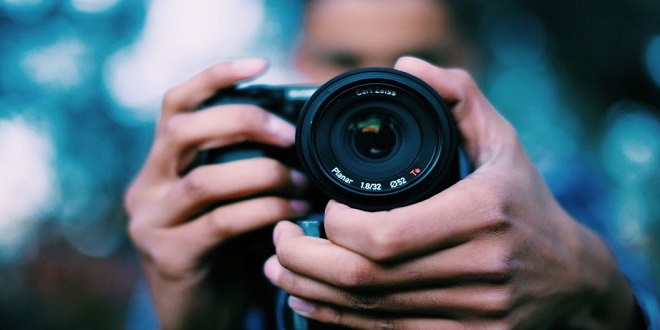Liveaboard Cruise and Scuba Diving in Raja Ampat

Welcome to the Underwater Paradise of Raja Ampat
Imagine diving into a vibrant underwater world teeming with life, where every turn reveals a new, breathtaking spectacle. Welcome to Raja Ampat, a diver’s paradise located in Indonesia’s West Papua province. This remote archipelago, known for its staggering marine biodiversity, offers a once-in-a-lifetime experience for scuba enthusiasts. But what if you could combine the thrill of diving with the comfort and convenience of a cruise? Enter the world of liveaboard diving.
Why Choose a Liveaboard Cruise?
A liveaboard cruise is like a floating hotel dedicated to divers. It allows you to maximize your diving time, explore remote sites, and enjoy the camaraderie of fellow diving enthusiasts. But before we dive into the specifics, let’s break down what a liveaboard cruise is and why it’s the ultimate way to experience Raja Ampat.
What is a Liveaboard Cruise?
Definition and Concept
A liveaboard cruise is a boat or ship designed to provide accommodation and diving facilities for scuba divers. Instead of returning to shore each day, you live aboard the vessel for the duration of your trip, traveling to different dive sites along the way. This setup allows for more dives per day and access to remote locations that day trips can’t reach.
Benefits of Liveaboard Diving
The main advantage of a liveaboard cruise is convenience. You wake up at the dive site, eliminating long transit times. Plus, the constant presence on the water means you can reach dive spots early, often before other divers arrive, ensuring pristine conditions. The all-inclusive nature of liveaboards—meals, accommodation, and dives—also makes for a hassle-free adventure.
The Allure of Raja Ampat
Location and Geography
Raja Ampat, which means “Four Kings,” is an archipelago comprising over 1,500 small islands, cays, and shoals. Located in the Coral Triangle, it’s renowned for having the richest marine biodiversity on the planet. The waters here are home to over 1,400 species of fish and 600 species of coral, making it a top destination for divers.
Rich Biodiversity
The coral reefs in Raja Ampat are among the healthiest and most diverse in the world. You’ll encounter everything from pygmy seahorses to massive manta rays. The variety of dive sites means there’s something for every diver, from shallow coral gardens to deep drop-offs and wrecks.
Preparing for Your Adventure
Necessary Certifications
Before embarking on a liveaboard cruise in Raja Ampat, ensure you have the required certifications. Most liveaboards require at least an Open Water certification, but Advanced Open Water is often recommended due to the depth and drift conditions of many dive sites.
Packing Essentials for a Liveaboard Trip
Packing for a liveaboard requires careful planning. Essentials include dive gear (if not renting), casual clothing, swimwear, reef-safe sunscreen, personal toiletries, and a good book or two for downtime. Don’t forget an underwater camera to capture the stunning marine life!
Best Time to Visit Raja Ampat
Seasonal Variations
Raja Ampat is a year-round destination, but the best conditions are typically from October to April. During this period, the seas are calmer, and visibility is at its peak. The manta rays are also more prevalent during these months.
Weather Considerations
While Raja Ampat enjoys a tropical climate, it’s essential to be prepared for sudden rain showers and humid conditions. Lightweight, breathable clothing is your best bet for staying comfortable.
Choosing the Right Liveaboard
Types of Vessels
Liveaboards in Raja Ampat range from luxury yachts to budget-friendly boats. Your choice depends on your budget and comfort preferences. Luxury options offer spacious cabins, gourmet meals, and additional amenities like spa services, while more affordable boats provide basic yet comfortable accommodations.
Factors to Consider
When selecting a liveaboard, consider the size of the group (smaller groups often mean a more personalized experience), the itinerary, the duration of the trip, and the facilities on board. Reviews and recommendations from fellow divers can also be invaluable.
Choosing the Right Liveaboard Operator
When choosing a Liveaboard operator, there are many options to suit different budgets and preferences. For those of you looking for a luxurious experience, trusted Liveaboard operators such as Dive Trips Indonesia offer top-class service with spacious cabins, gourmet dining and personalized itineraries.
Onboard Experience
Daily Routine
A typical day on a liveaboard includes multiple dives, interspersed with meals and relaxation time. Early morning dives take advantage of calm seas and active marine life, while night dives offer a chance to see nocturnal creatures.
Accommodations and Amenities
Accommodations on liveaboards vary from cozy bunks to luxurious suites. Common areas include dining spaces, sun decks, and sometimes even a lounge or library. Meals are usually communal, providing a chance to share stories and tips with other divers.
Dive Sites in Raja Ampat
Cape Kri
Cape Kri holds the world record for the most fish species spotted on a single dive. It’s a vibrant reef with an abundance of fish life, including barracudas, trevallies, and sharks.
Blue Magic
Blue Magic is a pinnacle dive site known for its swirling schools of fish and frequent sightings of manta rays and sharks. The site’s strong currents attract large pelagic species, making it a thrilling dive.
Manta Sandy
As the name suggests, Manta Sandy is famous for its manta ray cleaning stations. Watching these gentle giants being cleaned by smaller fish is a mesmerizing experience.
Marine Life Encounters
Coral Reefs
Raja Ampat’s coral reefs are a kaleidoscope of colors and forms. From hard corals to soft corals, sponges, and sea fans, the reefs here are incredibly diverse and healthy.
Manta Rays and Sharks
Encounters with manta rays are common in Raja Ampat, especially at sites like Manta Sandy. Shark enthusiasts can also expect to see a variety of species, including wobbegong sharks, blacktip reef sharks, and occasionally, hammerheads.
Rare Species
Raja Ampat is home to many rare and endemic species. Keep an eye out for the elusive walking shark, the tiny Pontoh’s pygmy seahorse, and the quirky Wobbegong shark.
Safety Measures
Diving Safety Protocols
Safety is paramount on liveaboard trips. Briefings before each dive cover the site’s conditions, marine life, and emergency procedures. Divers are encouraged to follow safe diving practices, including buddy checks and monitoring air supply.
Onboard Safety Features
Liveaboards are equipped with safety gear, including life vests, first aid kits, oxygen, and emergency radios. Crew members are trained in emergency response to ensure a safe diving experience.
Environmental Responsibility
Sustainable Diving Practices
Preserving Raja Ampat’s pristine environment is crucial. Divers are encouraged to practice buoyancy control to avoid damaging corals, use reef-safe sunscreen, and avoid touching marine life.
Conservation Efforts in Raja Ampat
Local and international organizations are actively involved in conservation efforts in Raja Ampat. Marine protected areas, community education programs, and sustainable tourism practices help safeguard this underwater treasure.
Cultural Experiences
Visiting Local Villages
Liveaboard cruises often include visits to local Papuan villages. These excursions provide insight into the traditional lifestyles and cultures of the indigenous people.
Understanding Papuan Culture
Papuan culture is rich and diverse, with unique customs, music, and crafts. Engaging with the locals and supporting their handicrafts contributes to the local economy and enhances your travel experience.
Photography Tips
Capturing Underwater Beauty
Underwater photography in Raja Ampat can be incredibly rewarding. To capture the best shots, use a good quality underwater camera, maintain proper buoyancy, and take advantage of natural light by diving during the day.
Essential Gear for Underwater Photography
Investing in a good underwater housing for your camera, wide-angle lenses for reef shots, and macro lenses for small critters can make a significant difference. Don’t forget extra batteries and memory cards!
Costs and Budgeting
Price Range for Liveaboard Trips
Liveaboard trips in Raja Ampat can vary widely in price. Budget options start around $200 per night, while luxury trips can exceed $600 per night. Prices generally include accommodation, meals, and diving.
Additional Expenses
Additional costs may include dive gear rental, park fees, tips for the crew, and travel insurance. It’s wise to budget for these extras to avoid any surprises.
Conclusion
Embarking on a Liveaboard Raja Ampat Cruise is more than just a diving trip; it’s an adventure into one of the most biologically diverse and beautiful regions on Earth. From the vibrant coral reefs to the majestic manta rays, every dive is a new discovery. So pack your bags, grab your dive gear, and get ready to explore the underwater wonders of Raja Ampat.
FAQs
What is the best liveaboard for beginners?
For beginners, it’s best to choose a liveaboard that offers guidance and support for new divers. Look for operators with experienced dive instructors and a focus on safety and education.
How long should a liveaboard trip be?
A typical liveaboard trip lasts between 7 to 10 days, allowing enough time to explore multiple dive sites and fully immerse yourself in the experience.
Are there any health considerations to keep in mind?
Yes, it’s essential to be in good health before diving. Ensure you are hydrated, well-rested, and free from any respiratory or heart conditions. A pre-trip medical check-up is recommended.
How can I minimize my environmental impact while diving?
You can minimize your impact by practicing responsible diving techniques, using reef-safe sunscreen, and supporting conservation efforts. Avoid touching or taking anything from the marine environment.
What should I do if I encounter dangerous marine life?
Always maintain a safe distance from potentially dangerous marine life and never provoke them. If you encounter a shark or other large predator, remain calm, keep eye contact, and slowly back away.




